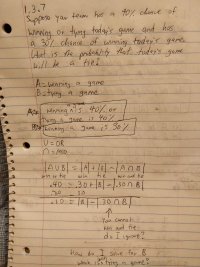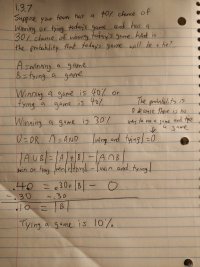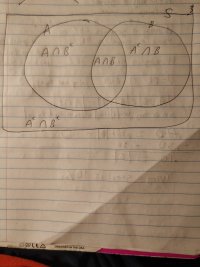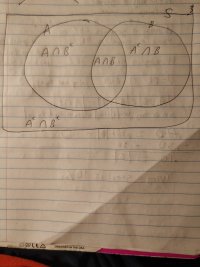nicholaskong100
New member
- Joined
- Aug 1, 2021
- Messages
- 33
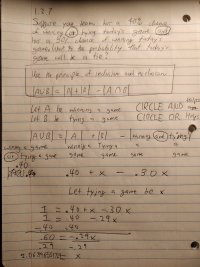
I notice circling OR in addition to circling AND helps with fitting the givens into the principle of inclusion-exclusion formula.
I have several questions:
1) Can "AND" be represented as "operations"?
2) Can "OR" be represented as an "operations"?
3) Is A U B which represents two events, the sample space, does A U B = 1?

